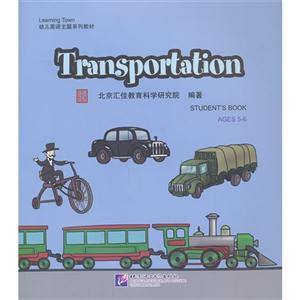
作者:王小军
页数:378
出版社:中国宇航出版社
出版日期:2023
ISBN:9787515921716
电子书格式:pdf/epub/txt
内容简介
本书通过对主要航天国家关于载人火星探测研究的调研分析,总结了发展趋势;在梳理载人火星探测任务架构涉及的各类设计因素的基础上,分析了重点设计因素对载人火星探测任务架构设计的影响,进一步提出了三步走的载人火星探测发展路线及其具体的任务架构方案,可供后续开展载人火星探测任务规划参考;并针对性地提出了四种初期载人火星探测的架构及其航天运输系统方案,明晰了载人火星探测航天运输系统的特点和组成,梳理了相关重点关键技术,并给出了技术途径,对后续开展载人火星探测航天运输系统的深入研究和工程研制具有很好的参考价值。
作者简介
王小军,研究员,国际宇航科学院(IAA)院士,现任中国航天科技集团有限公司第一研究院院长、党委副书记,国际宇航联(IAF)副主席,国家百千万人才工程专家。
本书特色
载人火星运输系统
本书系统总结了面向未来人类载人火星探测任务架构及方案研究成果,提出了未来载人火星探测发展路线和总体架构设计,并基于此提出了相关航天运输系统方案,梳理了关键技术,反映了当前热点研究成果,能够为航天领域的科研工作者和广大高校师生提供参考,具有很好的借鉴性。
国际宇航科学院(IAA)院士王小军主编
目录
Chapter 1 Introduction
Chapter 2 Study History of Human Mars Exploration Architecture and Space Transportation System
2.1 United States
2.2 China
2.3 Russia
2.4 Europe
2.5 Summary
Chapter 3 Architecture Design Options of Human Mars Exploration Mission
3.1 Crew and Cargo Transfer Mode
3.2 Transfer Orbit Type
3.3 Earth Departure Date
3.4 Earth Parking Orbit
3.5 Propulsion Technology
3.6 Earth Escape Mode
3.7 Mars Exploration Target and Mode
3.8 Mars Parking Orbit
3.9 Mars Stay Time
3.10 Mars Capture Method
3.11 Earth Return Mode
Chapter 4 Analysis of the Architecture Design Options of Human Mars Exploration Mission
4.1 Benchmark of Human Mars Exploration Mission Architecture Design Option Analysis
4.2 Influence Analysis of the Architecture Design Options of Human Mars Exploration Mission
Chapter 5 Development Roadmap and Mission Architecture Design
5.1 Development Roadmap and Mission Architecture Selection
5.2 Mission Architecture Design
Chapter 6 Space Transportation System of Human Mars Exploration
6.1 Analysis of the Space Transportation System Component for Human Mars Exploration
6.2 Analysis of the Incremental Velocity Demand and Scale of the Space Transportation System
6.3 Earth Surface Launching System
6.4 Mars Transfer Vehicle
6.5 Mars Landing and Ascent Vehicle
6.6 Mars Surface Infrastructure
Chapter 7 Analysis of Key Technologies
7.1 System Design of Space Transportation System for Human Mars Exploration
7.2 Cryogenic Propellant On-orbit Application
7.3 Advanced Propulsion Technology
7.4 Precision Guidance and Control Technology
7.5 Advanced Energy and Communication Technology
7.6 Advanced Structural Mechanism Design Technology
Chapter 8 International Collaboration
8.1 Demand Analysis
8.2 Current Situation and Development Trend
8.3 Mode Research
Chapter 9 Conclusion and Suggestion
Reference
APPENDIX
IAA in Brief
Chapter 2 Study History of Human Mars Exploration Architecture and Space Transportation System
2.1 United States
2.2 China
2.3 Russia
2.4 Europe
2.5 Summary
Chapter 3 Architecture Design Options of Human Mars Exploration Mission
3.1 Crew and Cargo Transfer Mode
3.2 Transfer Orbit Type
3.3 Earth Departure Date
3.4 Earth Parking Orbit
3.5 Propulsion Technology
3.6 Earth Escape Mode
3.7 Mars Exploration Target and Mode
3.8 Mars Parking Orbit
3.9 Mars Stay Time
3.10 Mars Capture Method
3.11 Earth Return Mode
Chapter 4 Analysis of the Architecture Design Options of Human Mars Exploration Mission
4.1 Benchmark of Human Mars Exploration Mission Architecture Design Option Analysis
4.2 Influence Analysis of the Architecture Design Options of Human Mars Exploration Mission
Chapter 5 Development Roadmap and Mission Architecture Design
5.1 Development Roadmap and Mission Architecture Selection
5.2 Mission Architecture Design
Chapter 6 Space Transportation System of Human Mars Exploration
6.1 Analysis of the Space Transportation System Component for Human Mars Exploration
6.2 Analysis of the Incremental Velocity Demand and Scale of the Space Transportation System
6.3 Earth Surface Launching System
6.4 Mars Transfer Vehicle
6.5 Mars Landing and Ascent Vehicle
6.6 Mars Surface Infrastructure
Chapter 7 Analysis of Key Technologies
7.1 System Design of Space Transportation System for Human Mars Exploration
7.2 Cryogenic Propellant On-orbit Application
7.3 Advanced Propulsion Technology
7.4 Precision Guidance and Control Technology
7.5 Advanced Energy and Communication Technology
7.6 Advanced Structural Mechanism Design Technology
Chapter 8 International Collaboration
8.1 Demand Analysis
8.2 Current Situation and Development Trend
8.3 Mode Research
Chapter 9 Conclusion and Suggestion
Reference
APPENDIX
IAA in Brief















